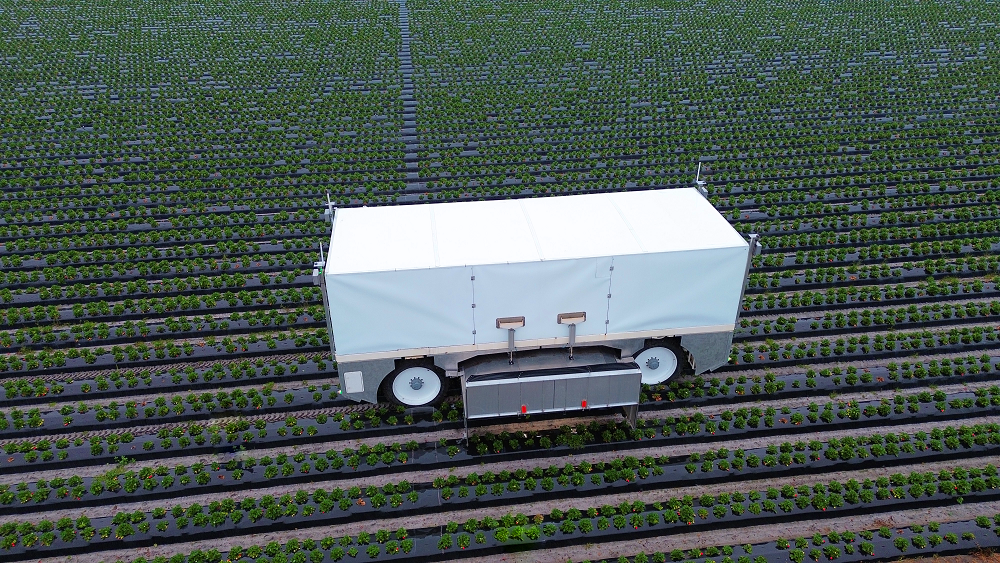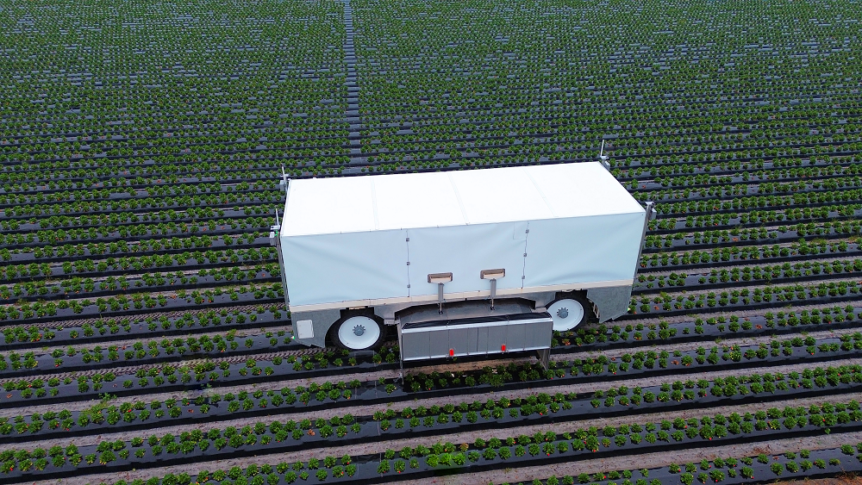
By Clint Thompson
Autonomous harvesters are the future of Florida strawberry production. They have to be. Labor costs are too high, prohibitively so, for Florida growers to continue at the current rate.
It is why industry leaders are advocating for time and resources to be devoted to the development of automatic harvesters.
“To be honest, if there isn’t an autonomous solution discovered, the industry is ultimately going to shrink,” said Nick Wishnatzki, public relations director at Wish Farms in Plant City, Florida. “The cost of harvesting is going to become so expensive that strawberries are going to become a luxury item. It’s really important that the industry, and whether it’s government funding or private institutions, we’ve got to get behind this. The labor force is shrinking, and the costs are just continuing to rise.”
The Florida H-2A Adverse Effect Wage Rate (AEWR) for 2025 is $16.23 per hour. It is a 10% increase from the previous year’s rate of $14.77. It also doesn’t account for housing and transporting the workers, as well as the piece rate paid per box as an incentive.
“We have the H-2A program, and it does help us get the crop picked. We are able to get workers from that program right now. That is a positive, but it’s a short-term solution to a long-term problem,” Wishnatzki said.
Recent Development
Harvest CROO, a company whose focus is developing a fully autonomous strawberry harvester, announced recently its automated harvest field trials have successfully demonstrated commercial viability. But Gary Wishnatzki, Harvest CROO co-founder and Wish Farms owner, said additional investment is needed for it to scale to a commercial level.
Harvest CROO conducted automated harvest field trials and completed performance rates on par with human harvesting in a commercial operation. Strawberries are the most challenging crop to pick.
“There’s multiple stages of berry on the plant. The vision system has to identify the right berries. There is also a lot of leaf material as well that has to be moved. You’re dealing with finding the berries that are hidden underneath,” Nick said.
“Harvest CROO has proven out this season that they’ve been able to pick close to, if not better than the human level. We’re really hopeful that Harvest CROO will get the funding it needs to scale and prove that they can really help change the industry with that technology.”










